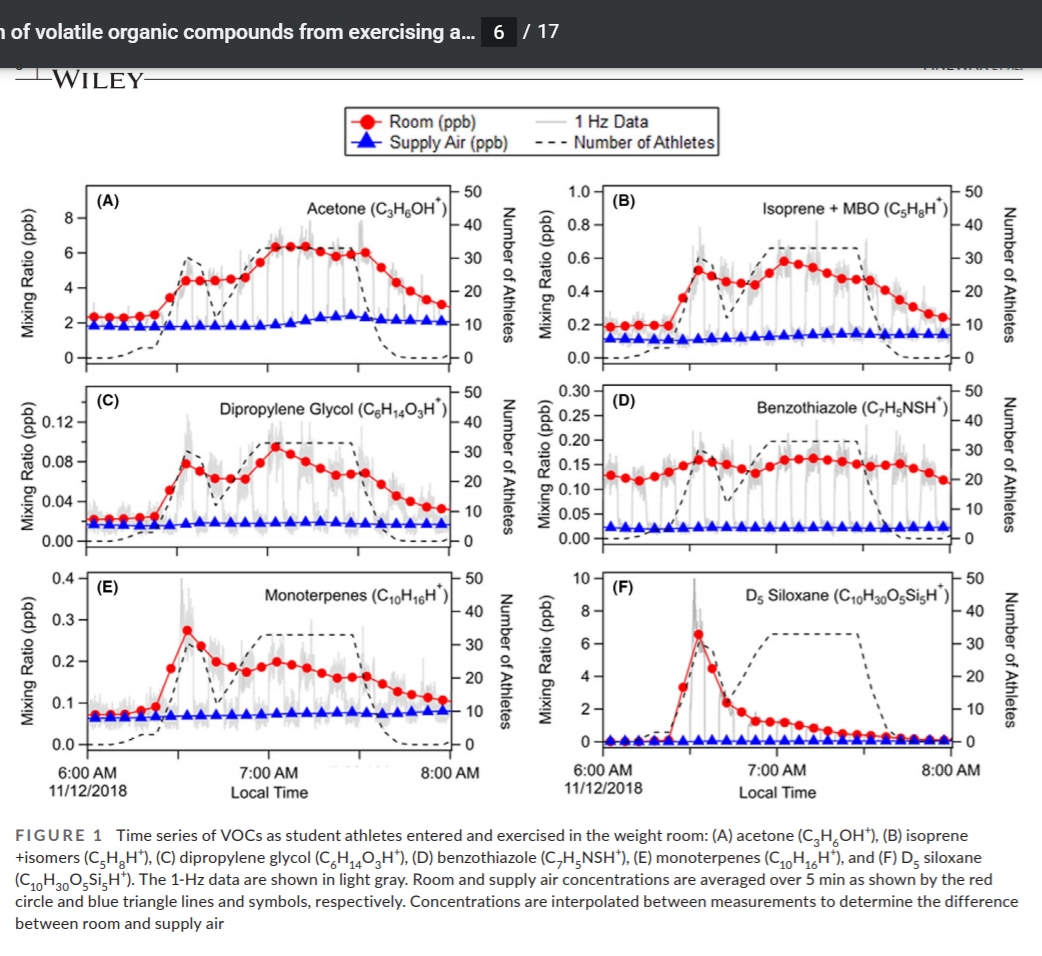Quantification and source characterization of volatile organic compounds from exercising and application of chlorine‐based cleaning products in a university athletic center
Zachary Finewax Indoor Air, 2020 18 December
Humans spend approximately 90% of their time indoors, impacting their own air quality through occupancy and activities. Human VOC emissions indoors from exercise are still relatively uncertain, and questions remain about emissions from chlorine‐based cleaners. To investigate these and other issues, the ATHLETic center study of Indoor Chemistry (ATHLETIC) campaign was conducted in the weight room of the Dal Ward Athletic Center at the University of Colorado Boulder. Using a Vocus Proton‐Transfer‐Reaction Time‐of‐Flight Mass Spectrometer (Vocus PTR‐photo), an Aerodyne Gas Chromatograph (GC), an Iodide‐Chemical Ionization Time‐of‐Flight Mass Spectrometer (I‐CIMS), and Picarro cavity ringdown spectrometers, we alternated measurements between the weight room and supply air, allowing for determination of VOC, NH3, H2O, and CO2 emission rates per person (emission factors).
Human‐derived emission factors were higher than previous studies of measuring indoor air quality in rooms with individuals at rest and correlated with increased CO2 emission factors. Emission factors from personal care products (PCPs) were consistent with previous studies and typically decreased throughout the day. In addition, N‐chloraldimines were observed in the gas phase after the exercise equipment was cleaned with a dichlor solution. The chloraldimines likely originated from reactions of free amino acids with HOCl on gym surfaces.














